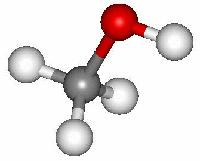|
The entry is based on
(1) J. Fisher, G. Paciga, L.-H. Xu, S.B. Zhao,
G. Moruzzi, and R. M. Lees,
2007, J. Mol. Spectrosc. 245, 7.
About 550 rotational transition frequencies with
microwave accuracy were taken from
(2) R. H. Hughes, W. E. Good, and D. K. Coles,
1951, Phys. Rev. 84, 418;
from
(3) M. C. L. Gerry, R. M. Lees, and G. Winnewisser,
1976, J. Mol. Spectrosc. 61, 231;
from
(4) Y. Hoshino, M. Ohishi, K. Akabane, T. Ukai,
S. Tsunekawa, and K.Takagi,
1996, Astrophys. J. Suppl. Ser. 104, 317;
from
(5) A. Predoi-Cross, R. M. Lees, H. Lichau,
M. Winnewisser, and J. R. Drummond,
1997, Int. J. Infrared Millimeter Waves, 18, 2047;
and from
(6) M. Ikeda, Y.-B. Duan, S. Tsunekawa, and K. Takagi,
1998, Astrophys. J. Suppl. Ser. 117, 248.
The input data included more than 17000 transitions from (1)
based on Ritz analysis of Fourier transform far-infrared spectra
in the 15–470 cm–1 region.
The global analysis covered the vt ≤ 2
torsional states, Jmax = 30, and
Kmax = 15 quantum number ranges.
With incorporation of 79 adjustable parameters, the global fit achieved
convergence with an overall weighted standard deviation of 1.072,
essentially to within the assigned measurement uncertainties of
±50 kHz for almost all of the microwave and millimeter-wave
lines and ±6 MHz (0.0002 cm–1) to
±15 MHz (0.0005 cm–1) for the
Fourier-transform far-infrared measurements.
Based on the global fit results, this database has been compiled
containing transition frequencies, quantum numbers, lower state
energies and transition strengths (Sμ2,
converted here to intensities at 300 K as usual), covering
vt ≤ 2, Kmax = 15,
and Jmax = 40 (10 J extrapolation).
Along with the calculated transition frequencies, model-dependent
uncertainties were also determined from the variance-covariance matrix
of the least squares analyses, as usual. Transitions with
predicted uncertainties larger than 0.5 MHz should be
viewed with some caution, those with uncertainties larger than
5 MHz should be great caution.
State numbers 0, 3, and 6 refer to lines with A symmetry
with vt = 0, 1, and 2; state numbers
1, 4, and 7 refer to lines with E symmetry with
Ka ≤ 0 and with
vt = 0, 1, and 2; state numbers
2, 5, and 8 refer to lines with E symmetry with
Ka > 0 and with
vt = 0, 1, and 2.
Lower state energies are given referenced to the J =
K = 0, A, vt = 0 level,
which is about 127 cm–1 above the bottom of
the torsional potential well.
The partition function consider states with vt ≤ 3,
J ≤ 44, and K ≤ 20. The K
levels are sufficient well beyond 300 K, the vibrational and
J levels are about sufficient at 300 K.
Experimental microwave and millimeter-wave transition frequencies
have not been merged, but are available in a
line file.
The experimental dipole moment in several torsional states was
reported by
(7) K. V. L. N. Sastry, I. Mukhopadhyay, P. K. Gupta, and J. VanderLinde,
1996, J. Mol. Spectrosc. 176, 38.
|
